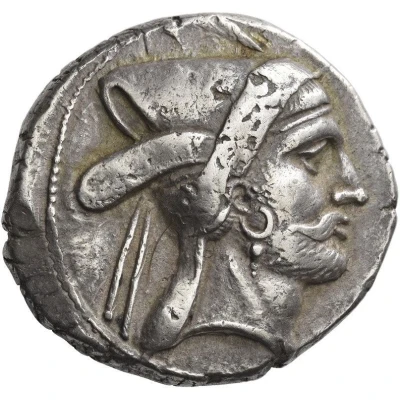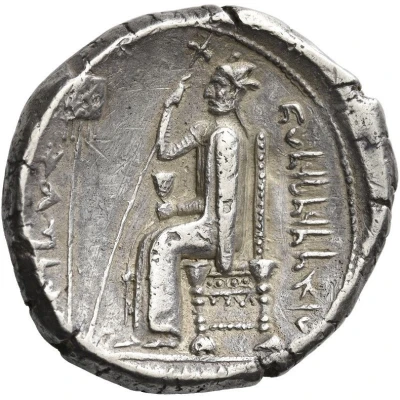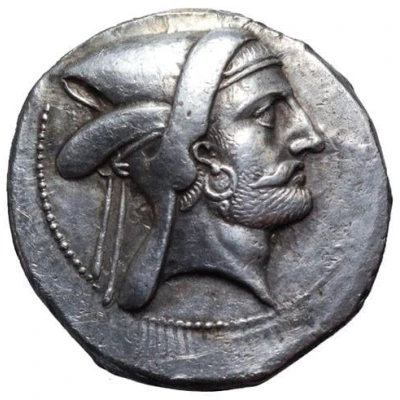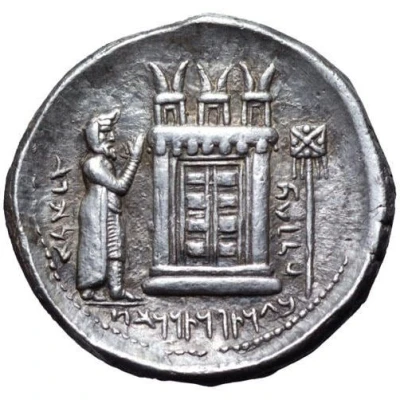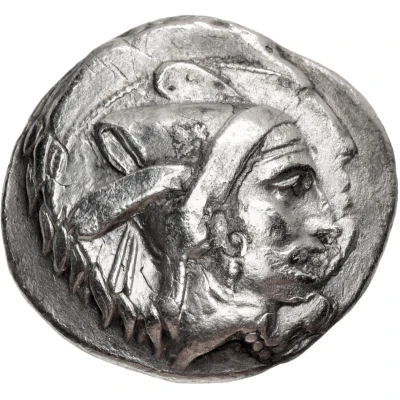
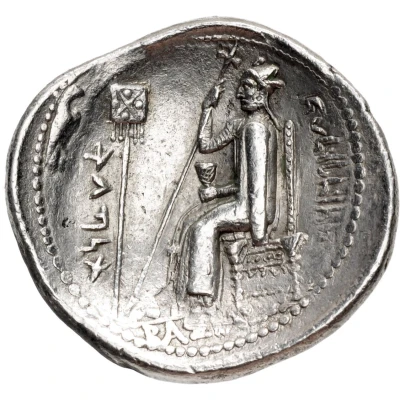

Tetradrachm - Bagadates overstruck 164 BC - 146 BC
| Silver | 16.69 g | 32 mm |
| Issuer | Kingdom of Persis (Persian Empires) |
|---|---|
| Dynast | Bagadates I (Baydad) (164 BC - 146 BC) |
| Type | Standard circulation coin |
| Years | 164 BC - 146 BC |
| Value | Tetradrachm (4) |
| Currency | Chian-Rhodian drachm |
| Composition | Silver |
| Weight | 16.69 g |
| Diameter | 32 mm |
| Shape | Round (irregular) |
| Technique | Hammered |
| Orientation | Medal alignment ↑↑ |
| Demonetized | Yes |
| Updated | 2024-10-10 |
| Numista | N#416944 |
|---|---|
| Rarity index | 100% |
Reverse
Baydād enthroned left, holding scepter and cup; standard to inner left; 'lhy' in Aramaic up left, bgdt prtrk' (Baydad frataraka) in Aramaic down right.
Script: Aramaic
Comment
Overstruck on a Babylon I mint tetradrachm of Seleukos I (second satrapy and kingship, 312-281 BC) in the name and types of Alexander III (SC 82.5).
The dating of the earliest coinage of the Kings of Persis is one of the most controversial issues in Seleukid-Iranian history. Based on the overstrikes of Persian coins on emissions of Alexander III and Seleukos I, some authors postulate a two-part Persian coinage, with the early part falling into the early 3rd century and a later part falling into the 2nd century. Another school of thought, based on archaeological, historiographical, and iconographic evidence, posits an uninterrupted coinage, beginning with the weakening of Seleukid power after the death of Antiochos III (222-187 BC) in the early 2nd century.
Interesting fact
One interesting fact about this coin is that it features an overstruck design, meaning that a new design was stamped over an existing one, indicating that the coin was issued by a different ruler or authority than the original one. This can provide valuable information to historians and numismatists about the coin's origins and the political context in which it was minted.
